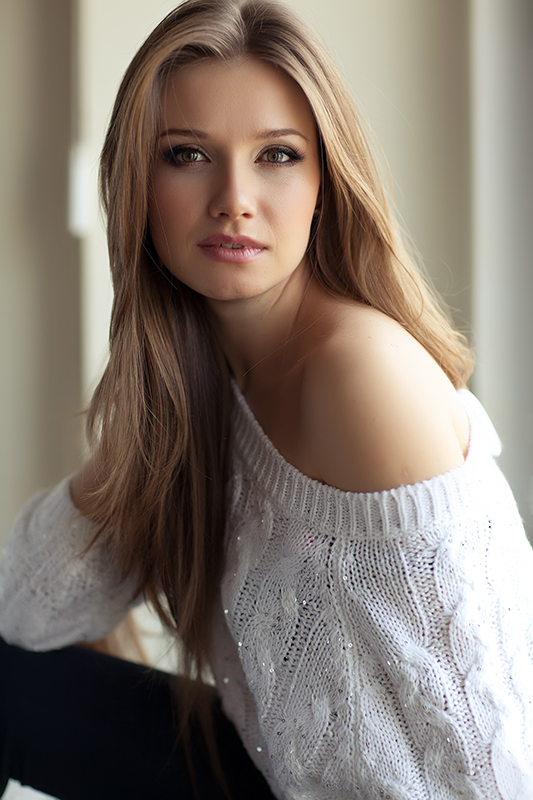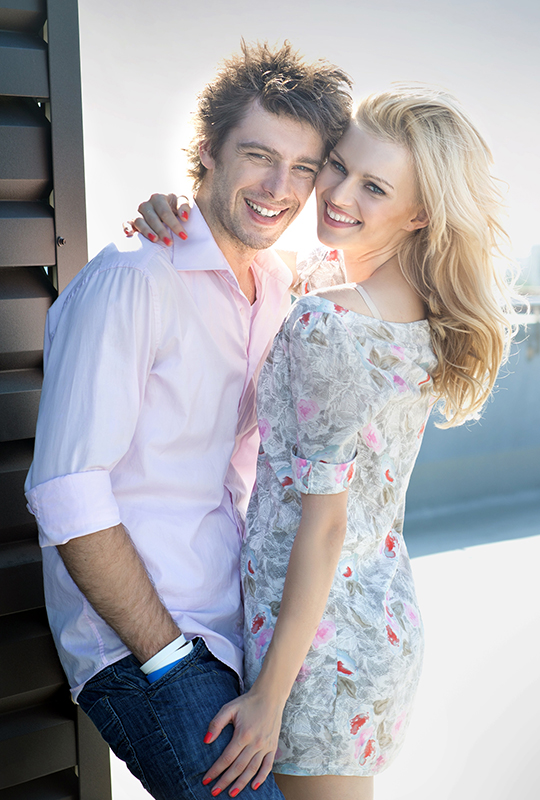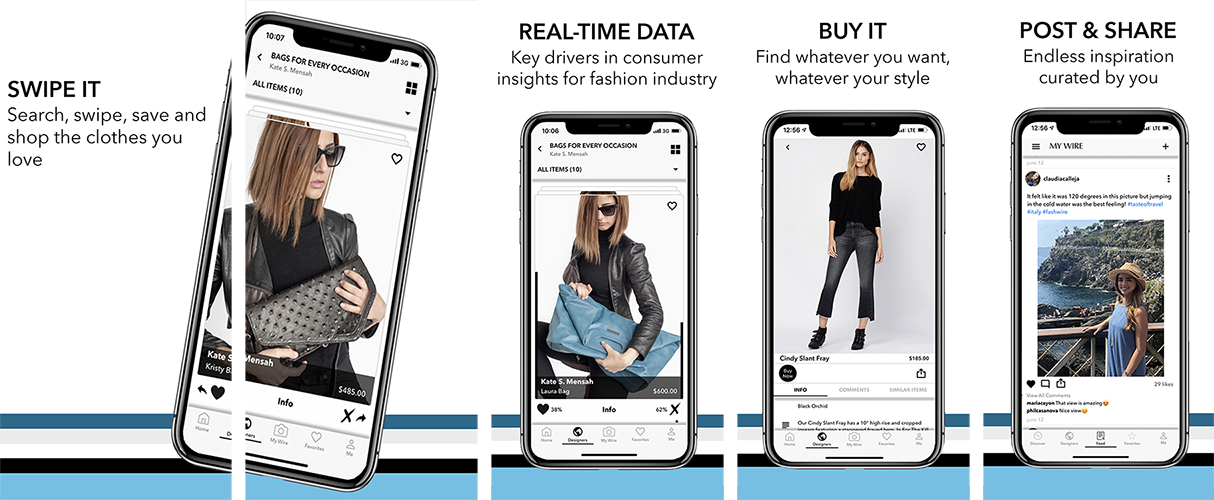
FASHTALKS WITH KINDOM
Designer Interview
Jun 14, 2021 03:37 PM
When did you know you wanted to become a designer?
I believe I wanted to become a designer around grade school or junior high. I remember playing with my Mom’s clothes and shoes, ooh-ing & aah-ing at her Vogue magazines. My Grandmother would cut and sew the designs that I would sketch up and then I would take-off the heads of my Barbie dolls to pretend they were store mannequins.
"Fashion helps us deliver our emotions as a visual platform."
How would you define fashion?
Fashion is an emotion that we as humans like to express. If it was simply a need, we would not have so many options. However, because we are emotional creatures, we express our moods or change our mindsets often. This can be conveyed through clothing! When feeling cozy for an evening at home, we put on comfortable sweats; when feeling sexy for a date, we put on a little black dress; when getting ready for an important meeting, we put on a power suit. Fashion helps us deliver our emotions as a visual platform.
Where do you find inspiration?
Inspiration can come from anywhere, during any part of the design process. It could be related to fashion, like falling in love with an indigenous handwoven textile and thinking of the drape or sitting at a café and noticing a patch of green grass growing through concrete and imagining the contrast of textures or colors. I designed a convertible fashion pant that inspired me to take it further and make convertible tops and dresses.
How would you describe your personal style?
My personal style is actually more on the casual side, now that I am a mom and needing to be comfortable all the time. I used to design for fast fashion brands, which focused more on the look rather than comfort, but there’s no reason why you can have both fashion and comfort! For example, all my trousers and skirts have elasticized backs or at least partial elastic on the waist. I even have a that a dress has hidden smocking, making the fit more comfortable and more importantly, inclusive to more body types. I also love convertible styles. It doesn’t make sense, nor is it sustainable, to have multiple pieces when you can have them in one garment. I have dresses, pants, and skirts that convert into three different lengths (maxi, midi and knee-length) all in one garment. I have shirts and dresses that convert from long sleeves to short sleeves. Just layer or accessorize each convertible look differently and you have completely different outfits! This is especially important for those who are disabled, for example, with an arm or a leg cast, allowing you to customize the convertible garments in a modular way to be more adaptive.
What was your previous work experience before launching your brand?
For many, many years, I was a designer for various other major brands. One of my dresses sold 13,000 pieces! That’s so crazy to think about, especially now in the context of sustainability and ethical manufacturing. The time I spent in that part of the industry gave me the experience of what I needed to start my own brand – from design and development to production and manufacturing. While most of the process remains the same, the supply chain is vastly different now because of sustainability. For example, working with indigenous tribes.
What is the one piece of advice you would give to a new designer?
The main advice I would give is to take it slow and start small. It’s easier to scale-up later. You don’t want to burn the candle at both ends, out the gate at break-neck speed, from the get-go. There are so many options out there now for supporting small businesses, such as creating a website using existing ecommerce platforms instead of creating it from scratch, or direct-to-consumer channels (like social media) that are turn-key instead of hiring a sales rep, which can happen later. Also, by starting out small, you have the flexibility and time to analyze and evolve your brand, since it often changes as the brand grows.
Do you have a favorite piece that you have designed?
All my convertible pieces!
"I would like KINdom to be recognized for uplifting humanity and the planet."
What is the most important thing you would like your brand to be recognized for?
I would like KINdom to be recognized for uplifting humanity and the planet. Sounds like a big job, but the little decisions we make such what materials to use or how the garments will be produced all make a significant difference on what the impact is on other living things and the environment. Working with indigenous tribes, for example, helps preserve their ancestral and cultural traditions. This is very important because there are indigenous groups that have already lost their cultural knowledge – like medicinal formulations or processing of fibers – because of assimilation to “modern society”. They are the roots of humanity.
Where is your favorite place to travel? Why?
I don’t really have a favorite place to travel. To me, humanity and different cultures are so fascinating, especially the intrinsic or endemic knowledge and practices which we don’t normally have in our own lives, depending on where you are and where you’re from. There is so much to learn and discover, especially from indigenous groups. I wish I could visit them all!
Do you have a passion other than fashion or design?
Before I got into my career, I started getting into painting and fiber arts. At one point I wanted to take a ceramics class. Maybe when I retire, I’ll have a chance to rediscover that again. For now, my passion is to continue to discover and experience what ancient and cultural practices the indigenous communities have. I was able to visit a cultural bearer from an indigenous tribe a few years ago, where I slept in a large hut made of bamboo and straw. At night we were illuminated with fireflies.
What did you wear to your first job interview?
Thank you for this question, it gave me a good memory and a chuckle. While in high school, I went through my mom’s closet and borrowed one of her 80s power suits (with major shoulder pads) for a department store job interview. I was hired on-the-spot!
What were some hurdles you had to overcome in your business?
There are always hurdles in any business. For me, it was the gamble of scaling up so quickly from the start; hence, my advice to start small. But the good thing was because of my experience in the business I had the ability to make it work. If some elements didn’t, I had the flexibility of going in another direction easily.
"Whatever you do, do it with consideration and compassion for all living things and the planet."
If you could go back and tell yourself one thing before beginning your career, what would it be?
I wish I knew about sustainability then, but since I didn’t, I would say to myself, “Whatever you do, do it with consideration and compassion for all living things and the planet. And start small!” Secondly, a quote from a Native American proverb which is, “The Peacemaker taught us about the Seven Generations. He said, ‘When you sit in the council for the welfare of the people, you must not think of yourself or your family, not even your generation.’ He said, ‘Make your decisions on behalf of the seven generations coming, so that they may enjoy what you have today’.”
What made you want to design womenswear?
Women’s wear has more options, more to play with and women are generally more open-minded to try new fashion risks. This opens up the variety of materials and embellishments to use. That being said, I would love to create children’s wear one day.
What do you envision for the future of your brand?
We are KIN – we are all related to each other. No matter what the color of our skin is, we bleed the same. We are interconnected. We are composed of the same elements as the rest of the universe – the sun, moon, stars, air, water, earth, plants, trees, animals, etc. The whole premise of KINdom is to highlight this interconnectedness. The more compassionate and respectful we are of other living things, the more we can exist in harmony and balance. The future of KINdom is to keep following the green gospel and never waiver on the commitment to sustainability, while keeping it fashionable.




